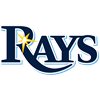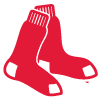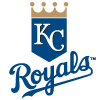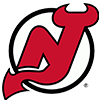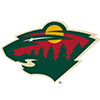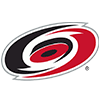Tackling the NFBC Main Event
by Scott Jenstad (@ScottJenstad)
The National Fantasy Baseball Championship (NFBC) is the preeminent high stakes fantasy baseball contest. The event that I will focus on is the signature 15-team contest called The Main Event, now entering its 11th season. The most important rule to know that makes the NFBC different is that there is no trading allowed. This rule really rewards the best drafters and managers and makes success in your league hinge on three main factors: the draft, roster management and free agent bidding through your $1,000 Free Agent Acquisition Budget (FAAB).
The Draft
First of all, try to attend one of the live drafts. Drafting in person is a ton of fun, although I also think drafting live is significantly more difficult than drafting online, which is a big help if you are prepared. You don't have the comforts of home and you have to look at everyone when you say a name out loud. It may be hard to believe if you have not drafted live, but it truly is harder to make an out of the box pick when you have 14 other owners looking at you. In addition, the clock seems to count down a lot faster in person that it does online, which can lead to mistakes from other owners.
The NFBC assigns draft positions using a Kentucky Derby System (KDS), which means that you rank your draft spot preferences and then receive the highest draft spot remaining on
Tackling the NFBC Main Event
by Scott Jenstad (@ScottJenstad)
The National Fantasy Baseball Championship (NFBC) is the preeminent high stakes fantasy baseball contest. The event that I will focus on is the signature 15-team contest called The Main Event, now entering its 11th season. The most important rule to know that makes the NFBC different is that there is no trading allowed. This rule really rewards the best drafters and managers and makes success in your league hinge on three main factors: the draft, roster management and free agent bidding through your $1,000 Free Agent Acquisition Budget (FAAB).
The Draft
First of all, try to attend one of the live drafts. Drafting in person is a ton of fun, although I also think drafting live is significantly more difficult than drafting online, which is a big help if you are prepared. You don't have the comforts of home and you have to look at everyone when you say a name out loud. It may be hard to believe if you have not drafted live, but it truly is harder to make an out of the box pick when you have 14 other owners looking at you. In addition, the clock seems to count down a lot faster in person that it does online, which can lead to mistakes from other owners.
The NFBC assigns draft positions using a Kentucky Derby System (KDS), which means that you rank your draft spot preferences and then receive the highest draft spot remaining on your rankings when your team is chosen. I believe too many people only consider Round 1 when setting up their KDS order, but it makes a lot more sense to look at the first four rounds (drafts usually open up after the first 60 players or so are taken). You need to identify where you see the drop-offs in talent and adjust your draft preferences accordingly. In addition, if you have targeted players, make sure to take that into account with where you want to draft and get into a spot where taking your player makes sense.
With no trading, one of your goals going into the draft has to be to achieve some sort of balance across the categories. In a 15-team draft like this, you are always going to have weak spots since the talent drops off quickly, but you have to make sure to keep an eye on balance, especially on offense. If you are too focused on a few categories early, you are going to find it hard to catch up in a draft where talent flies off the board quickly.
When thinking about offensive categories, it is wise to focus on batting average in the early rounds. Batting average is a tough category to project, but there are some guys you can target early in the draft who have a solid batting average floor. When deciding on bats early in the draft, I always take a final glance at batting average before making my pick. In addition, a solid early batting average allows you to risk some power or speed guys later on who struggle in the average category. Someone like Chris Carter fits the mold here as those 25-30 home runs can be pure gold in a deep league, but we all know it's coming with a .220 average that you need to be able to absorb.
One item to focus on in the draft is how you address closers. All offseason, you will hear fantasy experts suggest not paying for closers and that saves will come into the league. This may be true in thin leagues or leagues with trading, but finding saves after the draft in the Main Event is not always so simple. Of course, there will be undrafted relievers who end up as closers, but there are always multiple teams (especially early in the season) looking for closers, which causes people to not only bid very aggressively, but also to speculate and bid on potential closers a week or two before they end up with the job. Further, many owners draft the better setup men, so when those guys take over, saves do not come into the league.
You don't need to target Craig Kimbrel in every draft, but I usually try and grab one top-10 guy and then a second closer in the mid-rounds who is secure in the job to start the season.
Finally, be very careful with drafting rookies who are scheduled to start the season in the minors, especially the hyped ones that tend to go in the middle of the draft. Everyone will reference Mike Trout as an argument against this, but Trout's first full year was just a ridiculous outlier among rookies. Looking at my Main Event Draft last season, in rounds 20-23, teams drafted Jurickson Profar, Dylan Bundy, Oscar Taveras, Wil Myers and Billy Hamilton. Bundy and Taveras never played a game, Hamilton was not called up until September and Profar was bad (.234 and six homers in 286 at-bats) when he did play. Myers was solid when he was promoted, but you still waited until mid-June for him and only got 13 homers from that roster spot after you played the first 10 weeks with six bench spots.
In-Season Management
The single biggest key to in-season management is to remain as active as possible and grind out every single week. I like to split the bench with three hitting options and four pitching options. With a few bats on the bench, you can take advantage of the mid-week lineup moves on offense that the NFBC allows on Fridays. I really like to play matchups with my fringe lineup guys like my No. 4 and No. 5 outfielders, and corner infielder. With the new interleague play setup, it's always important to look ahead at schedules if you have a player who is a DH in the AL, as you don't want to get caught having to start a guy who may play one game in a series. The mid-week moves also allow owners to take advantage of guys with extreme platoon splits.
Managing your starting pitchers week to week can be a difficult task. In most weeks, you will have two closers in the lineup, which leaves seven starters. After you slot in your third and fourth best starters, there are still a couple of spots for fringe starters or free agents. You really want to make sure you have the flexibility to sit your non-stud starters when they have a brutal matchup. Also, picking serviceable pitchers who throw half their games in a pitcher's park can be an excellent way to get solid stats from a not so solid starter by using them only in home starts.
When looking at starters in FAAB, starters who throw twice in a certain week can be very valuable, but also very popular. Look for starters with exceptional matchups (both opposing team and venue the game is in), but try to limit yourself to picking up pitchers that you have at least a minor interest in long term. When adding a starting pitcher, it is with the thought that if he pitches well, I will keep him for additional weeks. Mixing and matching your starters to compete in the ratio categories as well as wins and strikeouts is a great puzzle and a big part of the challenge in the NFBC.
FAAB additions during the year often end up being a huge part of who wins each NFBC league. When sitting down to look at free agents for the week, the first thing to do is to make sure to take a look at who was dropped the week before. This is especially important if another team dropped an injured player you are interested in acquiring as you may not notice that player when you scan the free-agent list by recent stats.
In terms of actual bid numbers, it is hard to predict bids as every league ends up being so different. It is important to keep a general idea of who still has money left and which teams are still actively bidding. This can help you decide on bid amounts, especially later on in the season when some non-contending teams can lose interest. It may sound ridiculous, but a lot of owners make bids that end in zero or five, so it can pay to mix up the numbers you use in your bidding. When considering a big bid (over $100), make sure it is for someone with upside, who you plan on using in multiple weeks going forward.
End Game Strategy
When you get to the last four-to-six weeks of the season, it becomes all about categories. If you are not going to gain or fall in saves over the last couple of weeks, but can gain points in wins and strikeouts, it can make sense to sit all of your closers and use nine starters to make up ground in those two categories. Your lineup may look odd, but who cares, you are trying to cash and it's all about points in the end. Of course, if you are in contention for the overall prizes, you need to take that into account while also focusing on the league standings.
The NFBC is the best challenge out there and it's a lot of fun. There is no doubt that winning a league is a very tough task, but it is a great feeling to not only win, but to win against the best fantasy baseball players anywhere. The game is exceptionally well run and played by a lot of great people, and I am already looking forward to Vegas in March!








